A Complete Analysis of “The Gale” by Alfred Stevens

Explore Alfred Stevens’s The Gale (1891) for its dynamic seaside composition, masterful interplay of light and texture, and its portrayal of poised resilience in a storm’s wake.

Explore Alfred Stevens’s The Gale (1891) for its dynamic seaside composition, masterful interplay of light and texture, and its portrayal of poised resilience in a storm’s wake.

Uncover the mastery of Alfred Stevens’s The Lady in Blue—explore its dynamic composition, rich color harmonies, and nuanced portrayal of Belle Époque elegance and introspection.
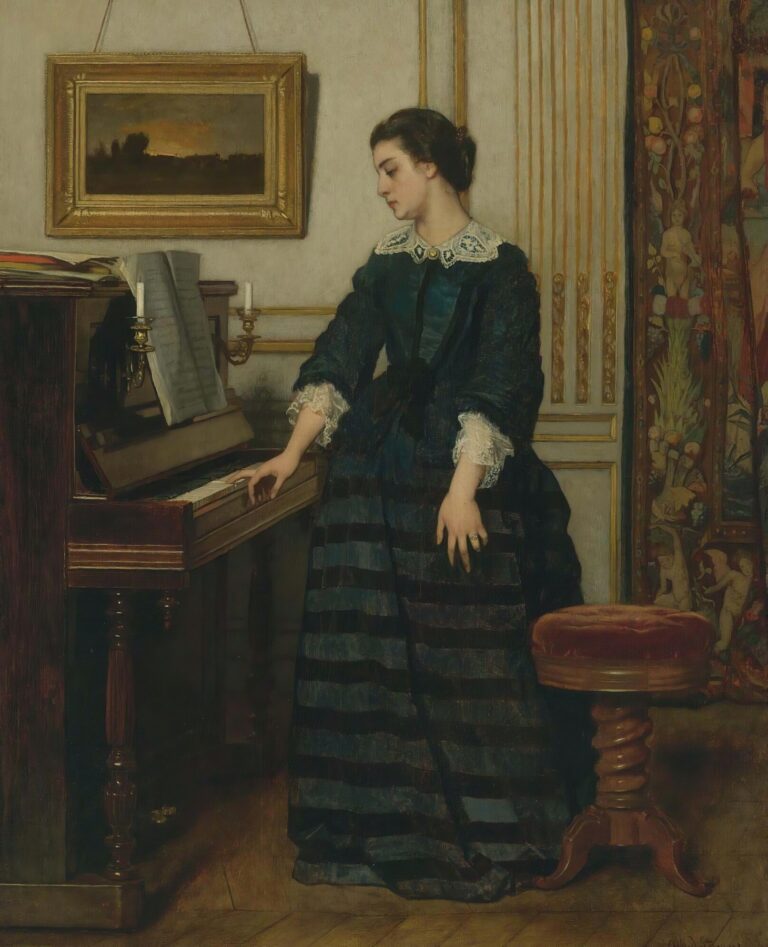
Delve into Alfred Stevens’s The Absence (1885) to explore its elegant parlor setting, nuanced use of light and color, and the poignant symbolism of silence at the piano.

Discover Alfred Stevens’s Woman in a Straw Hat, a masterful portrait that illuminates Belle Époque fashion, nuanced brushwork, and the introspective elegance of its sitter.

Explore Alfred Stevens’s Mother and Her Children (1883) to uncover its tender depiction of maternal devotion, nuanced composition, and masterful play of evening light.
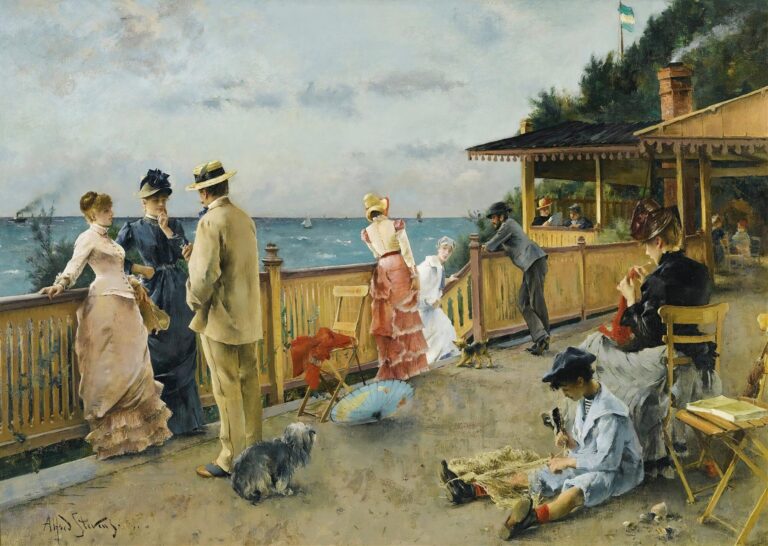
Explore Alfred Stevens’s The Villa of the Cliffs in Sainte‑Adresse (1884) to uncover its radiant seaside composition, nuanced character interactions, and masterful rendering of 19th‑century fashion and leisure.

Explore Alfred Stevens’s The Visit (1870)—an intricate parlor scene that blends sumptuous décor with psychological depth, revealing the silent undertones of refined social exchange.
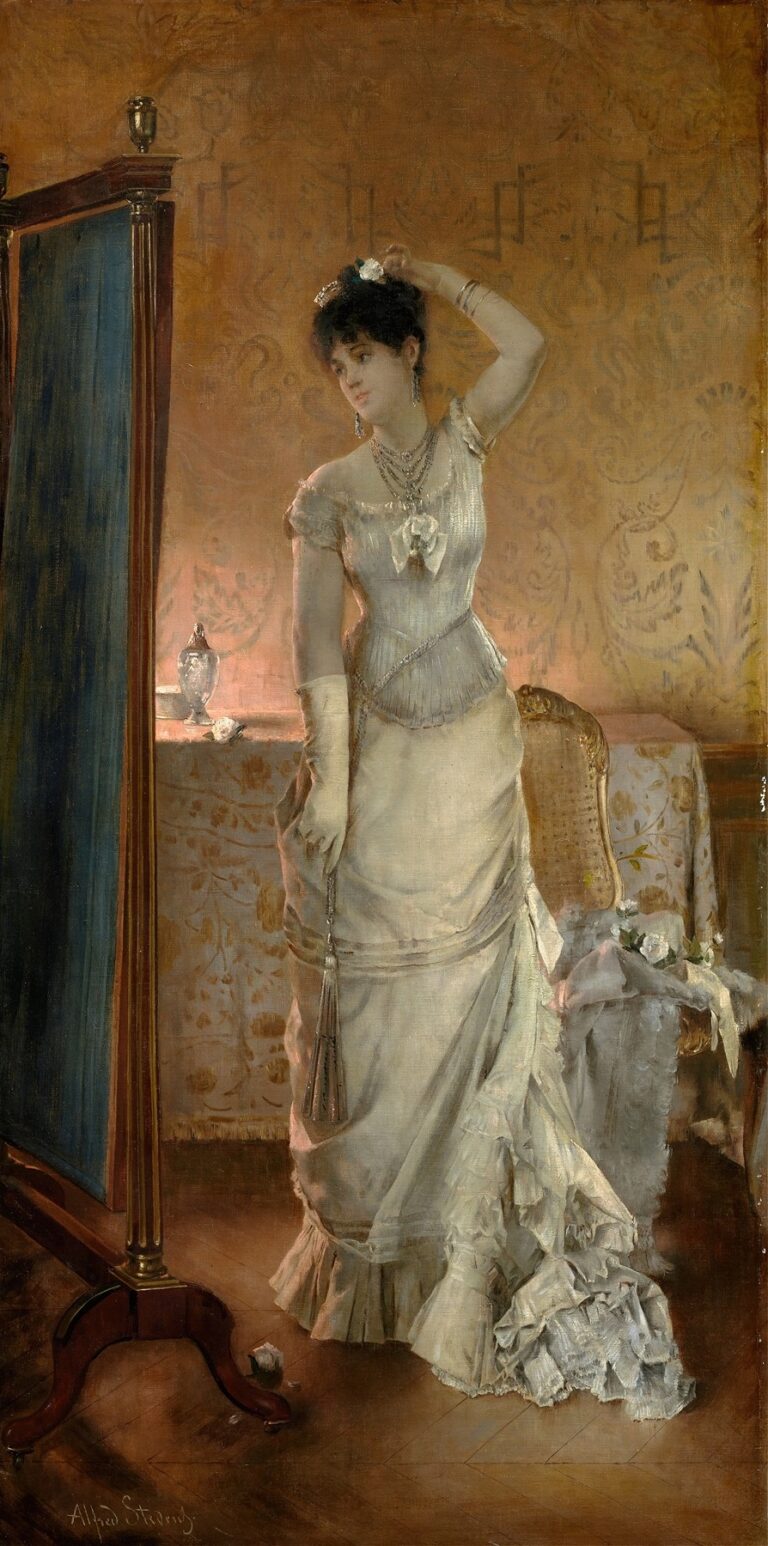
Discover Alfred Stevens’s Winter (1877), a masterful portrait of seasonal elegance and introspection that explores texture, light, and the psychology of a snow‑lit boudoir.
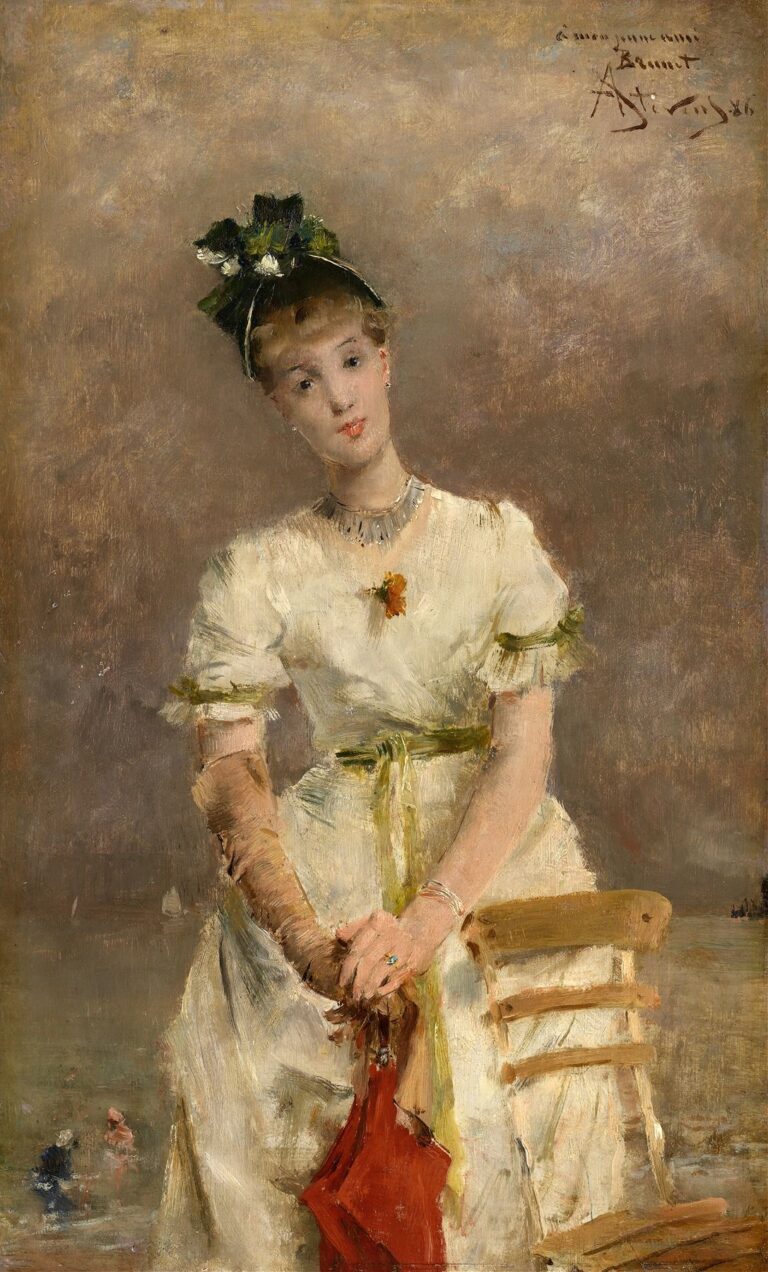
Delve into Alfred Stevens’s Young Woman By The Sea (1886) to discover how its refined composition, subtle color harmony, and resonant symbolism capture a moment of serene introspection by the ocean.
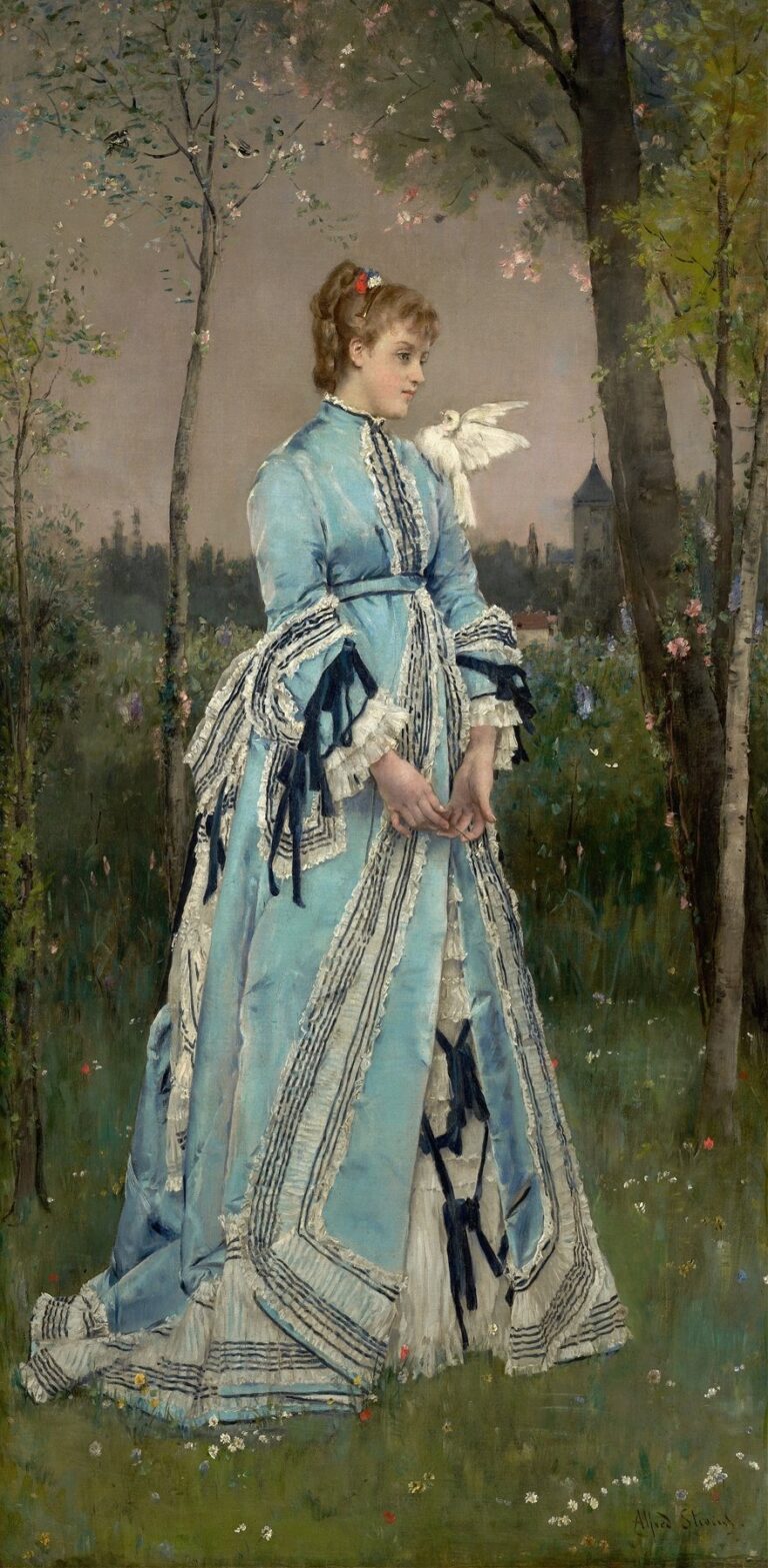
Explore Alfred Stevens’s Spring (1877) to uncover how its refined composition, delicate palette, and evocative symbolism capture the essence of seasonal renewal and emotional contemplation.
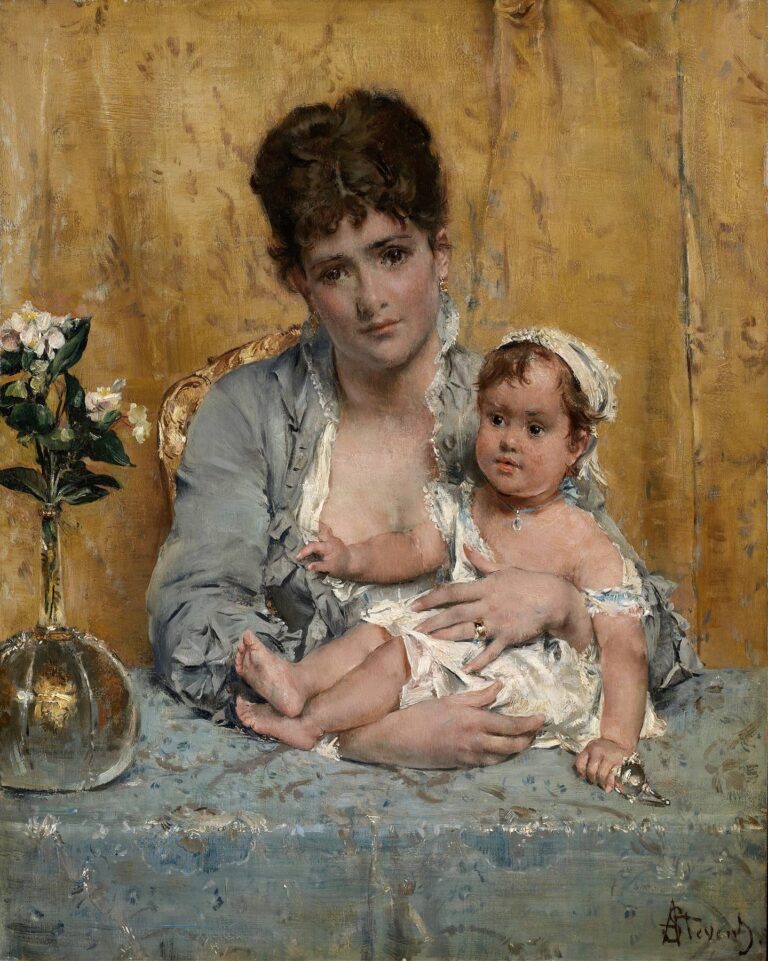
Dive into Alfred Stevens’s Mother And Child (1880) to explore its exquisite composition, delicate palette, and emotionally resonant portrayal of maternal love in a 19th‑century domestic interior.

Discover how Alfred Stevens’s Memories and Regrets (1874) masterfully combines refined composition, luminous color, and rich symbolism to explore themes of memory, longing, and the subtleties of domestic life.

Uncover the nuanced elegance of Alfred Stevens’s The Visit (1887)—explore its composition, color harmony, and subtle narrative that illuminate late‑Victorian social rituals and emotional depth.
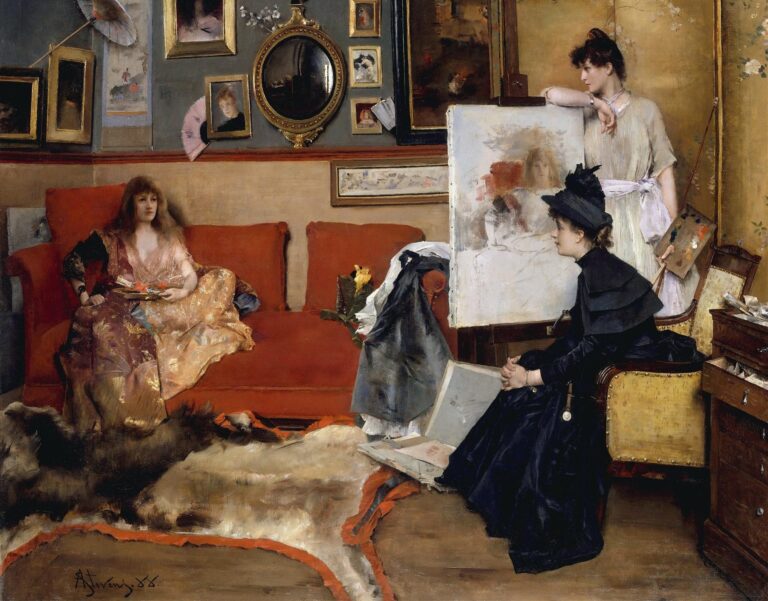
Delve into Alfred Stevens’s In the Studio (1888) to uncover how its refined composition, nuanced color palette, and empathetic portrayal of a woman artist illuminate the creative process and social dynamics of a Parisian atelier.
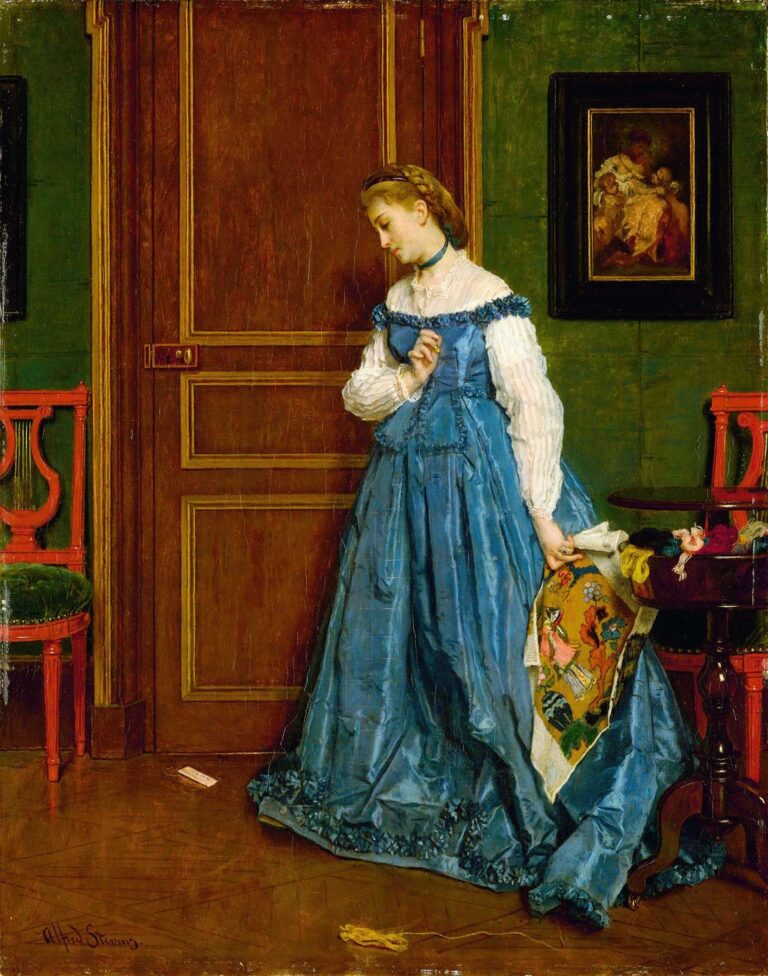
Explore Alfred Stevens’s 1867 masterpiece Hesitation (Madame Monteaux)—discover how its refined composition, lush color palette, and subtle narrative capture a fleeting moment of poised uncertainty.

Explore Alfred Stevens’s evocative 1881 painting “In Deep Thought,” where a contemplative young woman poised by the shoreline and her loyal spaniel become symbols of introspection, societal transition, and the interplay of interior elegance with the untamed sea.

Alfred Stevens’s 1877 painting “Fall” captures a quietly contemplative moment as a fashionably dressed woman pauses before an autumnal woodland scene. Explore how Stevens blends salon‑style elegance with outdoor atmosphere, using nuanced light, rich earth tones, and subtle Japonisme influences to evoke seasonal transience and inner reflection.
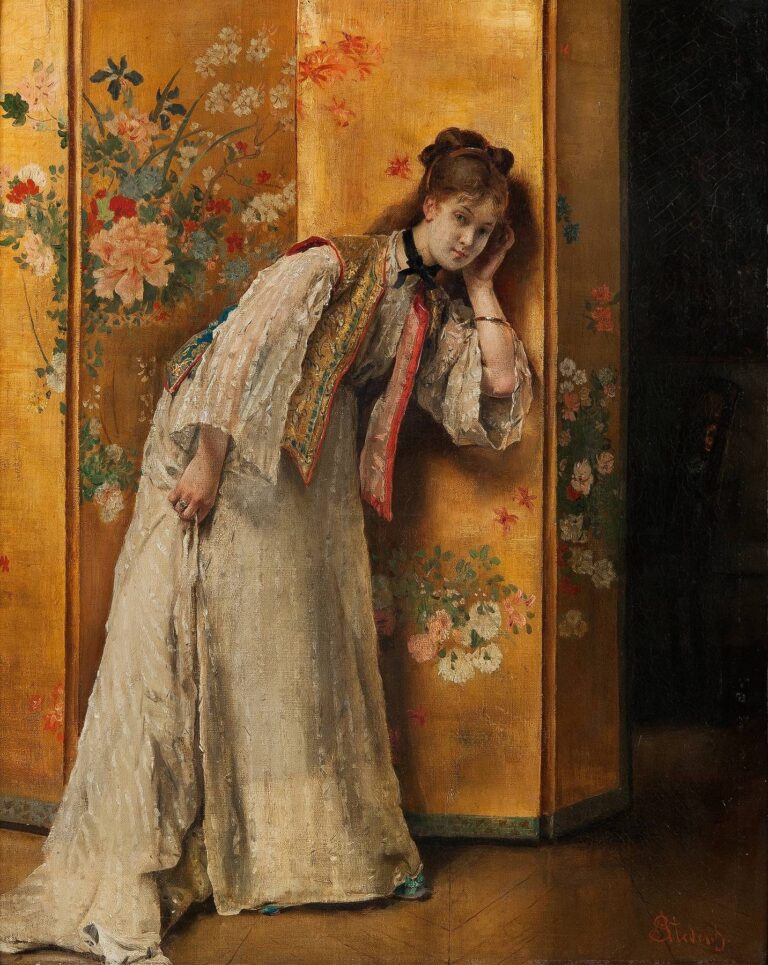
Delve into Alfred Stevens’s salon masterpiece Curious, where an elegant woman’s poised eavesdropping against a gilded Japonisme screen unfolds in sumptuous fabrics, subtle lighting, and delicate narrative tension.